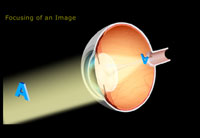Human Physiology - II (Biomedical Engineering)
Here human physiology is covered in two parts. This part (HP-2) describes some systems of physiology such as Nervous System (Study of Brain and Spinal Cord); Sense Organs (Study of senses of body); Digestive System (Study of digestive related organs); Endocrine System (Study of Hormones).
These all physiological systems are explained with the help of well organized information, good study material, different images, clear graphics, creative and informative animations, extensive visuals, interaction points, clear headings, screen-friendly fonts, attractive colours etc. All these features provide a rich learning material which is embedded to enhance the learning quality.
This course develops knowledge of the Interest for the students apart allows selection of learning material that meet their requirements and also improves their level of knowledge.
Introduction to BME
Introduction to BME
Unit 1: Nervous System
Introduction to Nervous System, Classification, Central Nervous System
(CNS), Human Brain, Brain parts their functions and properties, Cerebrospinal Fluid (CSF)
its composition and function. Spinal cord its structure and functions. Generation of Action
Potential, Conduction and Transmission of Nerve signals in humans. Peripheral Nervous
System (PNS), Autonomic Nervous System (ANS).
Unit 2.1: Eyes
This topic provides a detailed study material related to human eye which includes its anatomy, physiology, properties, generation of action potential, visual pathway, defects etc. This whole is covered with the help of attractive 2D and 3D animations, simulations and images which provides realistic view to attain quality learning.
Unit 2.2: Ears
This topic ‘human ear’ includes its structure, functions, properties, physiology with detailed explanation of mechanism of both hearing and balancing, generation of action potential ,auditory pathway, defects etc. This whole topic ‘ear’ is covered with the help of attractive 2D flash animations, 3D animations and images which provides realistic view to attain quality learning.
Unit 2.3: Nose
This topic ‘human nose’ covers all about its structure, functions, properties, physiology with detailed explanation of olfactory mechanism, generation of action potential, olfactory pathway, etc. This whole topic is covered with the help of attractive 2D flash animations, 3D animations and images which provides realistic view to attain quality learning.
Unit 2.4: Tongue
This topic ‘human tongue’ contains structure, functions, and properties of tongue. Physiology is explained in detail with its gustatory mechanism, generation of action potential, taste pathway, etc. This whole topic is covered with the help of attractive 2D flash animations, 3D animations and images which provides realistic view to attain quality learning.
Unit 2.5: Skin
This topic ‘human skin’ covers detailed explanation of its structure, functions, properties, glands of skin, cutaneous receptors and its pathway etc. This whole topic is covered with the help of attractive 2D flash animations, 3D animations and images which provides realistic view to attain quality learning.
Unit 3.1: Pituitary Gland
Unit 3.2: Pineal Gland
Unit 3.3: Thyroid Gland
Unit 3.4: Parathyroid Gland
Unit 3.5: Thymus Gland
Unit 3.6: Pancreatic Gland
Unit 3.7: Adrenal Gland
Unit 3.8: Gonads
Unit 4.1: Digestive Tract
Unit 4.2: Digestion Process
Unit 4.3: Nutrition
Unit 4.4: Enzymes
Complete Course Rs 1800

 Add to Cart
Add to Cart 